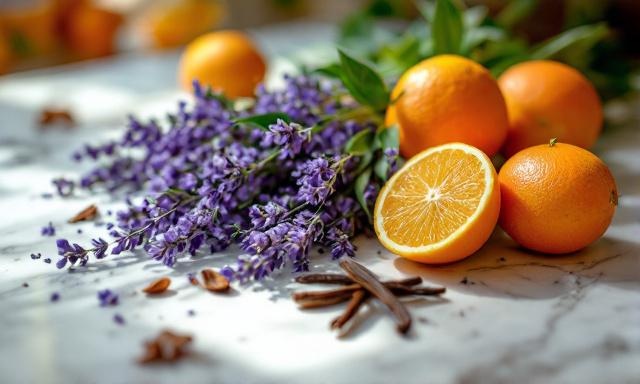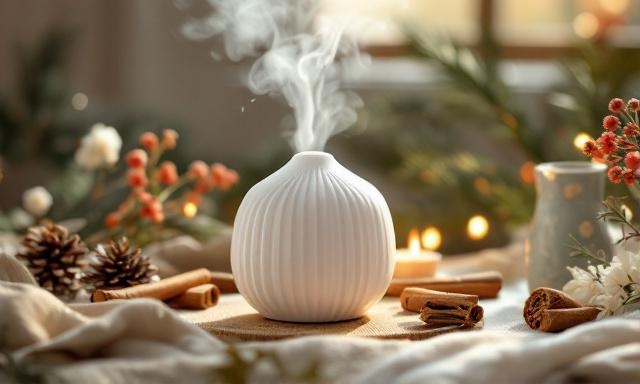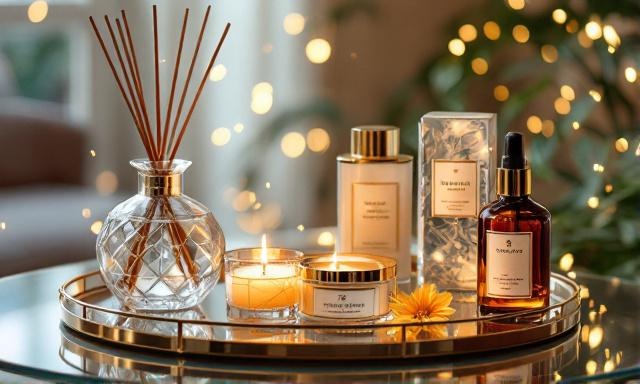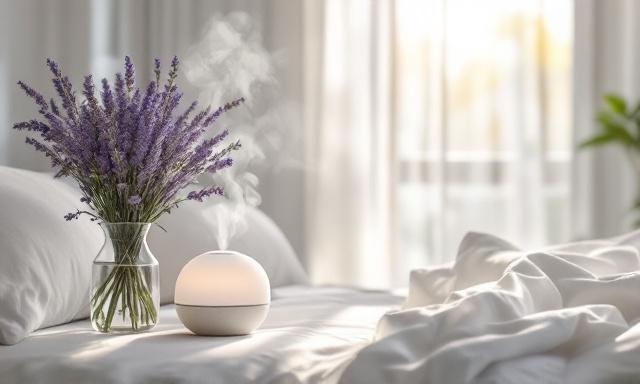
Aroma Enhancements
Using Fragrance to Elevate Home Environments
The Science Behind Scent and Mood

I've learned through my years working with flowers that our sense of smell has
an incredible power over our emotions and memories. When we encounter a familiar
scent, it can instantly transport us back to specific moments in our lives,
triggering vivid memories and influencing our mood. This connection exists
because our olfactory system is directly linked to the parts of our brain that
process emotions and memories, making fragrance a powerful tool for creating a
more positive and welcoming home environment.
Through my experience helping customers select the perfect florals, I've seen
firsthand how different scents can dramatically affect our state of mind.
Invigorating citrus scents can boost energy levels and help us feel more alert
in the morning, while calming lavender promotes relaxation and reduces stress.
Peppermint and rosemary scents have shown remarkable benefits for concentration
and mental clarity, making them perfect for home offices or study areas.
I always tell my clients that creating distinct scent zones in their homes can
significantly improve their daily routines. By strategically placing different
fragrances throughout your home, you can create environmental cues that support
various activities. A gentle vanilla scent in the bedroom helps signal it's time
to wind down, while an energizing lemon scent in the home office can boost
productivity during work hours.
Seasonal Fragrance Strategies

During spring and summer, I love working with light, fresh fragrances that
mirror the season's natural beauty. Spring calls for delicate floral scents like
jasmine, lily of the valley, and fresh-cut garden roses, while summer welcomes
bright citrus notes of lemon, orange, and grapefruit. These lighter scents help
create an uplifting atmosphere that complements the warm weather and brings the
outdoors inside.
As temperatures drop, I switch to warmer, more comforting fragrances that create
a cozy atmosphere. Autumn is perfect for spicy scents like cinnamon, nutmeg, and
clove, combined with warm vanilla or pumpkin notes. Winter calls for rich
evergreen scents, including pine, cedar, and balsam fir, which create a festive
mood and bring the crisp winter forest indoors.
The key to transitioning between seasonal scents is to make gradual changes that
align with the shifting weather. I recommend starting the transition about two
weeks before each season change, slowly introducing new fragrances while phasing
out the previous season's scents. This prevents fragrance fatigue and helps
maintain a natural flow between seasons.
Fragrance Layering Techniques
Creating depth in your home's fragrance profile requires careful consideration
of complementary scents. I've found that combining a main scent with supporting
notes creates a more sophisticated atmosphere. For example, pairing vanilla with
subtle hints of sandalwood creates a warm, inviting fragrance that's more
complex and interesting than using vanilla alone.
When using multiple fragrance sources, it's important to follow some basic
guidelines to prevent scent overwhelming. I always suggest spacing out different
fragrance sources by at least 10 feet and ensuring proper ventilation. It's
better to use fewer, high-quality scent sources than to overwhelm a space with
too many competing fragrances.
Each room in your home should have its own signature scent combination that
reflects its purpose. I recommend creating unique blends that complement each
space's function while maintaining some consistency throughout the home. A
bedroom might feature lavender with light vanilla notes, while a home office
could combine mint with subtle citrus tones.
Essential Tools for Home Fragrance

Selecting the right fragrance delivery method makes a big difference in how
scents perform in your home. From my experience, reed diffusers work best in
bathrooms and small spaces, offering consistent fragrance without requiring heat
or electricity. Candles create wonderful ambiance along with scent, making them
perfect for living areas. Room sprays provide quick refreshes and are ideal for
entryways or spaces needing immediate fragrance boosts.
Quality fragrance vessels can serve as beautiful decorative elements while
delivering wonderful scents. I always suggest investing in attractive diffusers
with well-designed glass bottles, elegant ceramic essential oil burners, or
stylish candle holders that complement your decor. These pieces add visual
interest while serving a practical purpose.
Natural alternatives often provide more authentic and healthier fragrance
options for your home. Fresh flowers, herbs, and plants offer genuine scents
while purifying the air. Essential oils derived from natural sources provide
pure fragrance without artificial chemicals. Simmering potpourri made from dried
flowers, citrus peels, and spices creates wonderful natural aromas.
Proper maintenance of your fragrance tools ensures both safety and optimal
performance. Regular cleaning of diffusers, trimming candle wicks to 1/4 inch
before each use, and never leaving burning candles unattended are essential
practices. I always remind people to keep fragrance sources away from direct
sunlight and heat sources, and to replace reed diffuser sticks every three
months.
Room-by-Room Fragrance Guide

Creating the perfect bedroom environment for sleep involves choosing gentle,
calming fragrances. I recommend soft lavender as the primary scent, combined
with subtle hints of chamomile or vanilla. These relaxing fragrances help signal
to your body that it's time to wind down and can improve sleep quality when used
consistently.
Bathroom fragrances need to be both functional and pleasant, while standing up
to humidity and frequent use. I've found that clean, fresh scents like
eucalyptus, mint, or light citrus work best in these spaces. These fragrances
help maintain a clean atmosphere while providing an energizing effect that's
perfect for morning routines.
The fragrances in your entryways and living spaces create crucial first
impressions and set the tone for your entire home. I suggest using warm,
welcoming scents like light florals or subtle vanilla in these areas. These
inviting aromas help guests feel comfortable while creating a consistent
fragrance foundation throughout your main living areas.
Kitchen fragrances should enhance rather than compete with cooking aromas. I
recommend using light, clean scents like herbs or citrus that complement food
preparation. Rosemary, basil, or lemon scents work particularly well because
they blend naturally with cooking smells and help neutralize strong food odors
without overwhelming the space.
